Reuters reported on February 18 that Iranian Islamic Revolutionary Guards Corps (IRGC) Quds Force commander Esmail Ghaani directed Iranian-backed Iraqi groups to “pause” attacks on US forces during a January 29 meeting in Baghdad.[i] Ghaani met with the leaders of Iranian-backed Iraqi militia groups less than 48 hours after the Iranian-backed drone attack on January 28 that killed three US servicemembers in Jordan. Kataib Hezbollah responded to Iranian directives from Ghaani by announcing that it would “suspend attacks” on January 30.[ii] Harakat Hezbollah al Nujaba did not “initially agree” to Ghaani’s directive.[iii] The group said that it would continue attacks targeting US forces on February 2, after Ghaani’s visit.[iv] The Islamic Resistance in Iraq claimed three attacks targeting US forces after Ghaani’s visit.[v] It has not claimed any attacks after February 4.[vi]
Ghaani’s visit illustrates the degree to which Iran controls its proxy network across the Middle East. Most of Iran’s proxies and partners in Iraq immediately ceased attacks following Ghaani’s order. Harakat Hezbollah al Nujaba initially did not agree but Iranian-backed Iraqi groups have not resumed attacks targeting US forces since February 4.[vii] Ghaani and Iran can pressure their partners and proxies to pause or resume attacks as needed, however. Nine Iranian and Iraqi sources told Reuters that Ghaani chose to pause attacks to “avoid a similar escalation” to the 2020 escalation cycle that resulted in the US airstrike that killed former IRGC Quds Force commander Qassem Soleimani.[viii] Ghaani could resume attacks in pursuit of Iranian objectives—namely, expelling US forces from Iraq—as needed when or if Iran calculates that the risk of “similar escalation” decreases.
Key Takeaways:
- Iraq: Reuters reported on February 18 that Iranian Islamic Revolutionary Guards Corps (IRGC) Quds Force commander Esmail Ghaani directed Iranian-backed Iraqi groups to “pause” attacks on US forces during a January 29 meeting in Baghdad. Ghaani’s visit illustrates the degree to which Iran controls its proxy network across the Middle East.
- Khan Younis: The Israeli Defense Minister stated on February 18 that Hamas’ Khan Younis Brigade has been “defeated and does not function as a military entity in any way.”
- Rafah: Israeli War Cabinet Minster Benny Gantz said Israeli forces will enter Rafah at the start of Ramadan if Hamas does not release the remaining Israeli hostages the group holds.
- Gantz’s statement reflects a possible change in the Rafah operation’s timeline. Channel 12 reported on February 10 that Israeli Prime Minister Benjamin Netanyahu said in a War Cabinet meeting that the IDF would need to complete the operation into Rafah by March 10 due to international pressure.
- Yemen: US Central Command conducted five preemptive strikes in Houthi-controlled territory in Yemen on February 17 that targeted three mobile anti-ship cruise missiles, one subsurface naval attack drone, and one surface naval attack drone.
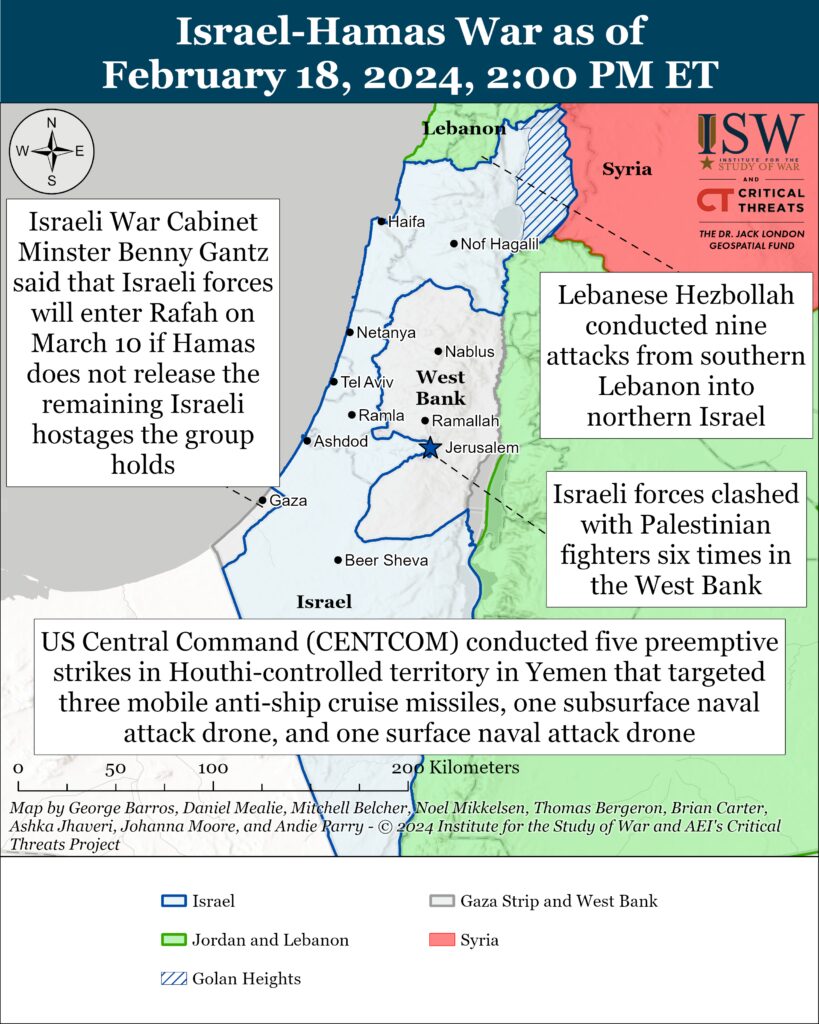
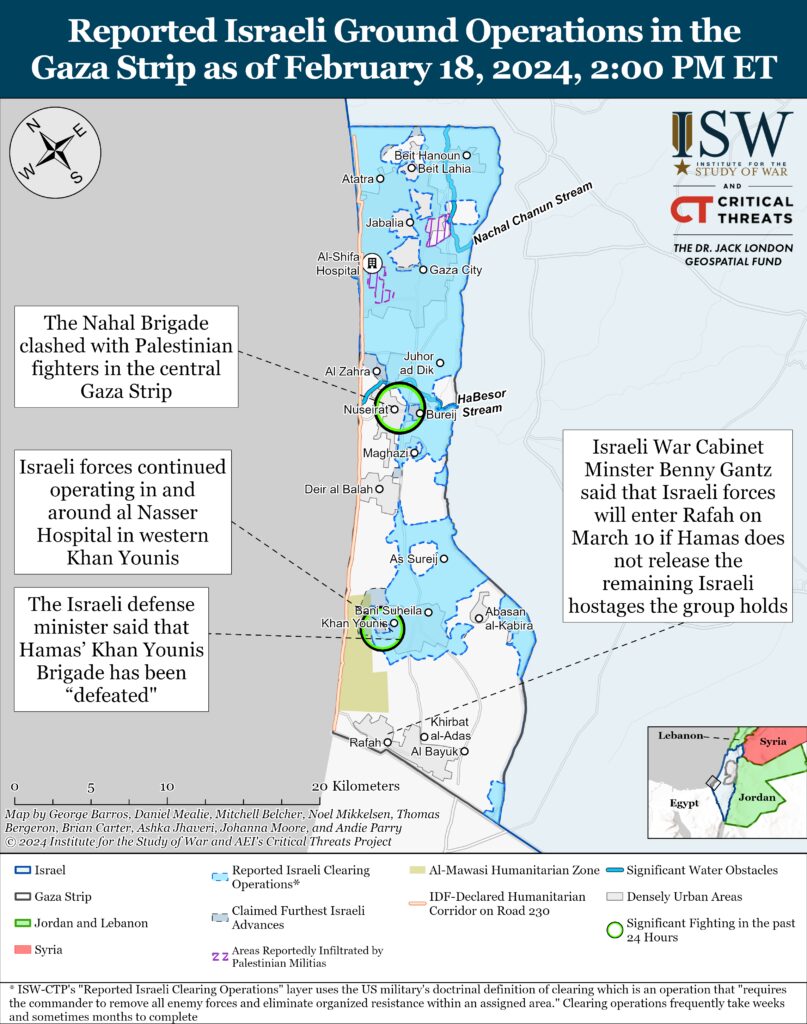
Israeli War Cabinet Minster Benny Gantz said Israeli forces will enter Rafah at the start of Ramadan if Hamas does not release the remaining Israeli hostages the group holds.[xxii] Ramadan is expected to begin on March 10, 2024. Gantz’s statement reflects a possible change in the Rafah operation’s timeline. Channel 12 reported on February 10 that Israeli Prime Minister Benjamin Netanyahu said in a War Cabinet meeting that the IDF would need to complete the operation into Rafah by March 10 due to international pressure.[xxiii] Israeli officials have committed to minimize civilian casualties in operations in Rafah, but they have not publicly outlined a plan for how the IDF would evacuate civilians from Rafah.[xxiv] Israel’s partners and allies, including the United States, have refused to support a Rafah operation without a plan in place to protect civilians. The IDF Chief of Staff stated on February 13 that Rafah contains an estimated 10,000 Hamas fighters and over a million displaced Palestinian civilians.[xxv] Netanyahu said on February 17 that the IDF would enter Rafah to destroy the remaining Hamas battalions even if a hostage deal is achieved.[xxvi] The Israeli Defense Minister said on February 16 that Israel would not evacuate Rafah’s civilian population into Egypt.[xxvii]
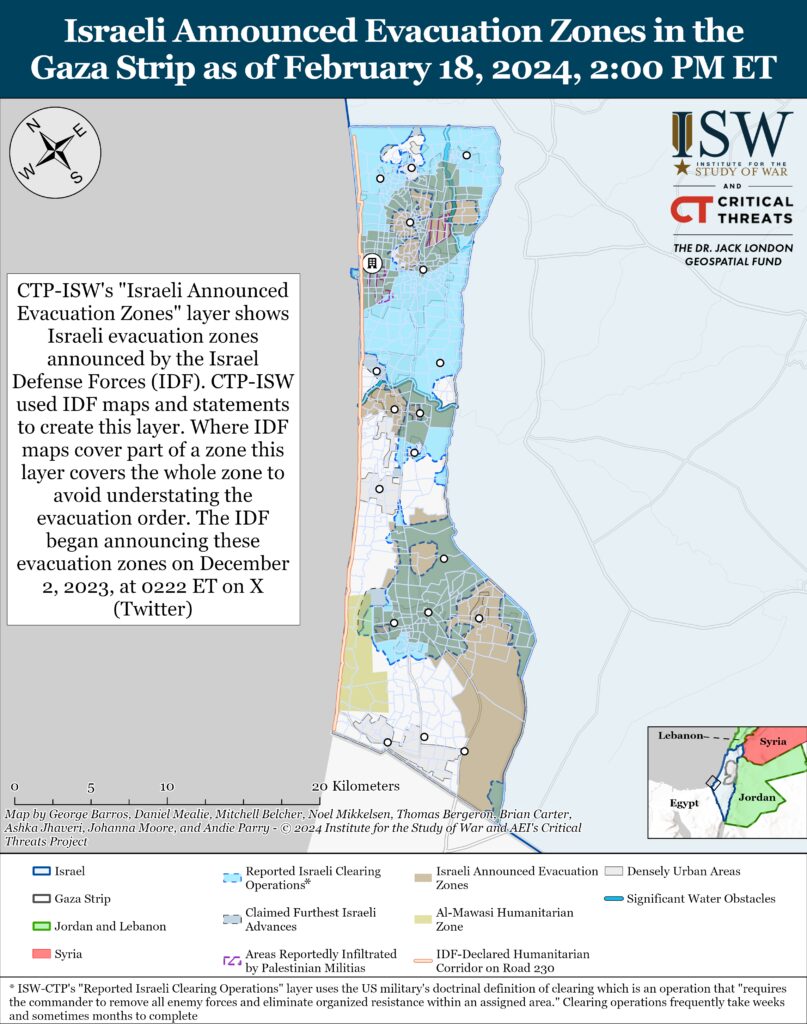
Palestinian militias did not conduct indirect fire attacks into southern Israel from the Gaza Strip on February 18.
West Bank
Axis of Resistance campaign objectives:
Draw IDF assets and resources toward the West Bank and fix them thereIsraeli forces clashed with Palestinian fighters six times in the West Bank on February 18.[xxviii] Israeli forces killed an al Aqsa Martyrs’ Brigade commander during an IDF raid in Tulkarm refugee camp.[xxix]
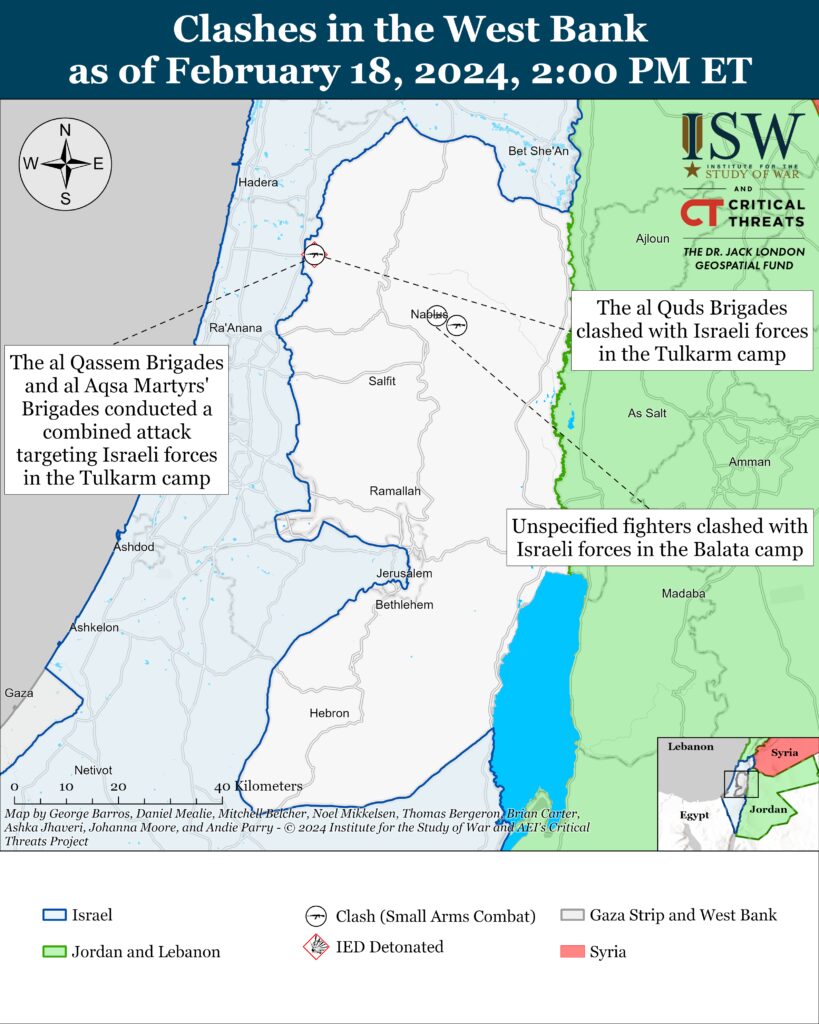
This map is not an exhaustive depiction of clashes and demonstrations in the West Bank.
Southern Lebanon and Golan Heights
Axis of Resistance campaign objectives:
Draw IDF assets and resources toward northern Israel and fix them there
Set conditions for successive campaigns into northern IsraelLebanese Hezbollah conducted nine attacks from southern Lebanon into northern Israel on February 18.[xxx]
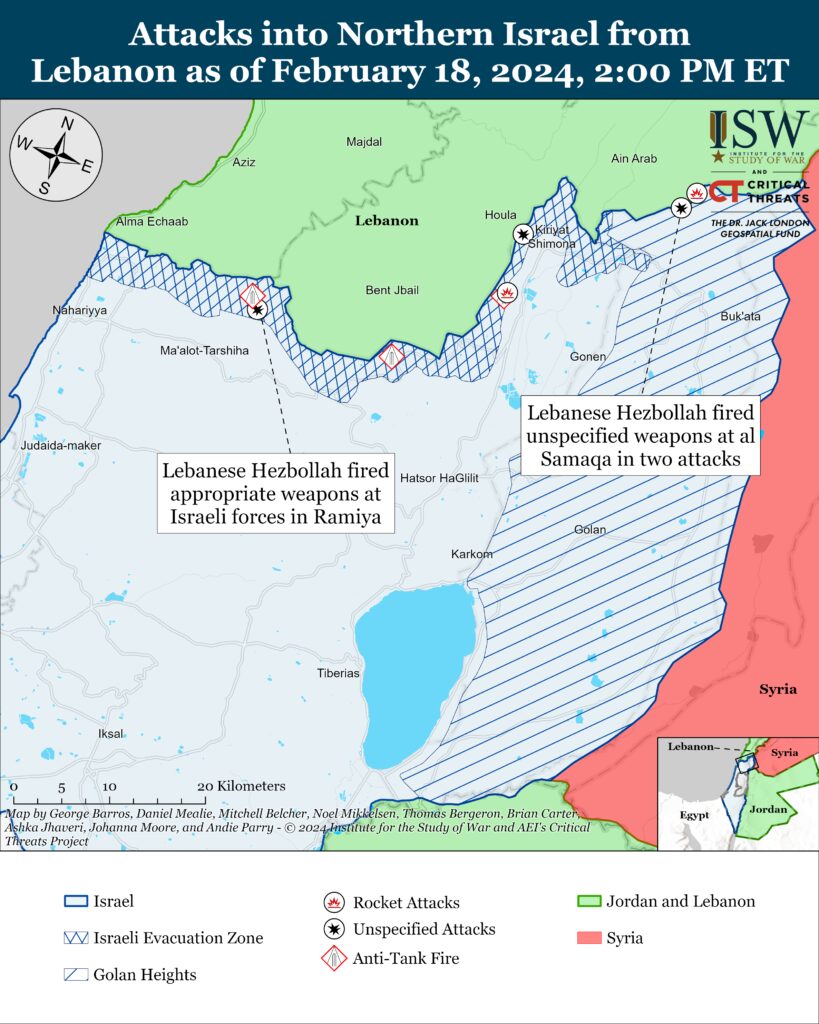
Recorded reports of attacks; CTP-ISW cannot independently verify impact.
Iran and Axis of Resistance
Axis of Resistance campaign objectives:
Demonstrate the capability and willingness of Iran and the Axis of Resistance to escalate against the United States and Israel on multiple fronts
Set conditions to fight a regional war on multiple frontsUS Central Command (CENTCOM) conducted five preemptive strikes in Houthi-controlled territory in Yemen on February 17 that targeted three mobile anti-ship cruise missiles, one subsurface naval attack drone, and one surface naval attack drone.[xxxi] CENTCOM reported that the Houthis used a subsurface naval attack drone on February 17 for the first time since the Houthis launched their attack campaign targeting international shipping in October 2023.[xxxii] CENTCOM conducted the strikes after determining that the cruise missiles and naval drones were an “imminent threat” to merchant vessels and US Navy ships in the Red Sea.[xxxiii]
 Eurasia Press & News
Eurasia Press & News



